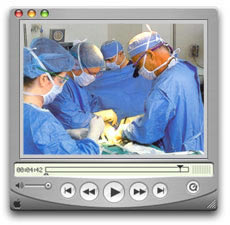Tubal Reversal Pregnancy Study Report 2007
Summary
Results of the most recent and largest study of pregnancies and pregnancy outcomes after tubal reversal surgery are now available from the Tubal Reversal Pregnancy Study Report 2007. This is a prospective observational study of over 3000 women who had their tubal reversal procedures performed by Dr. Gary Berger during the 5 year period 2001-2005. The overall pregnancy rate after tubal reversal was 69%. Age at the time of reversal surgery was an important factor associated with pregnancies and their outcomes. Age-specific pregnancy rates were: 82% for women under 30, 76% for ages 30-34, 67% for ages 35-39, and 41% for women 40 years or older. Pregnancy outcomes were also associated with age. Younger women had lower miscarriages rates and higher birth rates than older women.
This article provides highlights of the study - the complete report can be viewed here:
- Summary and Introduction
- Study Method
- Patient Population
- Pregnancy Rates
- Pregnancy Outcomes
- Tubal Reversal vs. IVF
- About Pregnancy Statistics
Introduction
Many people are unaware that tubal ligation - usually considered a permanent method of birth control - can be reversed through low cost, one hour outpatient surgery. Even many physicians believe that in vitro fertilization (IVF) is the only treatment option for women who want another baby after having a tubal ligation. Information is widely available about IVF pregnancy and birth rates in the United States from the Centers for Disease Control (CDC). Tubal reversal statistics, however, are more difficult to find, and in the past, they have been based on relatively small patient numbers. The recent report from the Tubal Reversal Pregnancy Study provides outcome data from a large patient population with follow-up from 1 to 5 years after surgery.
Study Methodology
There were 3,019 women who had tubal reversal procedures performed by Dr. Berger at Chapel Hill Tubal Reversal Center from January 1, 2001 through December 31, 2005. They were followed up at regular intervals to determine the outcomes of their procedures. The 2007 report includes data through December 31, 2006, giving a minimum length of follow-up of 1 year and a maximum of 5 years. Some of the women reported more than one pregnancy during the study interval. All pregnancies and their outcomes were recorded in an electronic database and included in the data analysis.
Patient Population
The women’s ages ranged from 23 to 50, the average being 34 years old. They came from a wide geographic distribution in the United States as well as from other countries. This map gives an overview of the resident locations of the US patients.

The methods of tubal ligation among this group of women were ligation/resection (40%), coagulation (29%), ring/clip (22%) and fimbriectomy or unknown (9%).
Tubal Reversal Techniques
All tubal reversal operations were performed using outpatient mini-laparotomy surgical and anesthetic techniques that minimize tissue injury, blood loss, anesthesia time, postoperative pain, and recovery time. These techniques are shown and described by Dr. Berger in a video called Outpatient Tubal Reversal that has been broadcast on Discovery, The Learning Channel and the CBS Early Show. The tubal reversal procedures included microsurgical tubotubal anastomosis, ampullary salpingostomy, and tubouterine implantation.
Results
Pregnancy Rates by Age
As expected, younger women had higher pregnancy rates than older women. The overall pregnancy rate was 69% and age-specific pregnancy rates ranged from 82% for women under 30 to 41% for women 40 years of age and older.
Pregnancy Outcomes by Age
Age also was associated significantly with the outcome of pregnancy. As age increased, the percentage of pregnancies resulting in births declined. This was a result of more frequent miscarriages with increasing age. Among women under age 35, over half of pregnancies resulted in birth while one third miscarried. The birth rate declined to 40% as the miscarriage rate increased to 45% for women ages 40 and older. Independent of age, the ectopic pregnancy rate was significantly higher (16%) than that found in the general population, which is approximately 2.5%. Whether tubal reversal results in an increased risk of miscarriage is unclear, but it seems unlikely since the miscarriage rate reported in the general population ranges from approximately 20% to 40%, depending on a woman's age and the extent of early pregnancy testing.
Pregnancy Rates by Age and Tubal Ligation Method
Pregnancy rates taking into account both age and tubal ligation method are shown in Table 3. The highest pregnancy rate (87%) was reported by women age 29 or less who underwent reversal of a previous ring or clip method of sterilization. The lowest pregnancy rate (31%) was for women age 40 and older with either a fimbriectomy or unknown method of tubal ligation. Of the two variables, age is more predictive than tubal ligation method of the likelihood of becoming pregnant after reversal surgery.
Comment
Ongoing patient contact is necessary to provide pregnancy and outcome statistics after tubal reversal surgery. At Chapel Hill Tubal Reversal Center, nurses enter information into an electronic patient database at the patient's registration, the surgical procedure, and all post-operative communications between patients and staff. Patients are contacted routinely at 6 and 12 month intervals after their tubal reversal procedure if they have not been in regular contact with the Center's staff. The comprehensive follow-up database at Chapel Hill Tubal Reversal Center is unique. To our knowledge, no other doctor or medical facility maintains such a long term, ongoing follow-up system to determine the outcomes of tubal reversal procedures. This approach to long term follow-up and data collection may serve as a model for other physicians or clinics to document the results of tubal reversal procedures.
About The Author
Dr. Gary Berger is a member of the Board of Directors of INCIID. He is a reproductive surgeon who limits his practice to tubal reparative surgery. Dr. Berger is the Medical Director of Chapel Hill Tubal Reversal Center – the only facility that is exclusively for tubal reversal surgery.


No comments:
Post a Comment